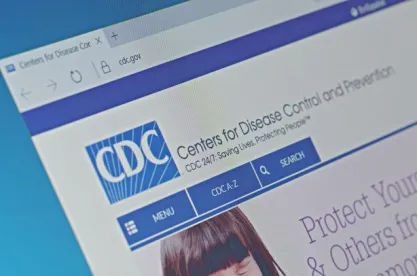In its most recent COVIDView weekly update, the U.S. Centers for Disease Control and Prevention (CDC) reported that levels of COVID-19 “virus circulation and associated illnesses” have been rising nationally since September 2020. The CDC has also issued a “COVI1111111111D-19 Alert,” noting that “COVID-19 cases, hospitalizations, and deaths across the United States are rising.” In the context of such rising cases and increased scientific knowledge about the virus, the CDC made significant changes to its critical infrastructure sector guidance on November 16, 2020. In the revised guidance, the CDC urges employers to allow exposed but asymptomatic critical infrastructure personnel to continue to work only as “a last resort and only in limited circumstances.” [Emphasis in original.]
While the CDC characterizes this guidance update as a “clarification,” prior guidance on critical infrastructure workers has been long understood by employers as providing an exception to the general recommendation that exposed individuals quarantine for 14 days following the last exposure. That is, prior guidance suggested that employers may allow exposed but asymptomatic personnel to continue to work provided the workers remain asymptomatic and follow certain additional safety precautions. Based on “[g]rowing evidence of transmission risk from infected people without symptoms (asymptomatic) or before the onset of recognized symptoms (pre-symptomatic),” as well as the increase in COVID-19 cases around the country, the CDC now recommends that employers start with the presumption that critical infrastructure workers who are exposed to COVID-19 (e.g., who have “close contact” with an infected individual) “should be quarantined for 14 days, consistent with Public Health Guidance for Community-Related Exposure.”
As an exception to the presumption that even critical infrastructure workers should quarantine, according to the CDC, employers may allow asymptomatic critical infrastructure personnel to continue to work in very limited circumstances, “such as when cessation of operation of a facility may cause serious harm or danger to public health or safety.” In those circumstances, the CDC states that employers should coordinate with state and local health authorities “in managing the continuation of work in a way that best protects the health of their workers and the general public” and should implement the additional safety precautions previously recommended, including encouraging workers to pre-screen at home, screening workers upon arrival at the workplace, regularly monitoring and self-monitoring for symptoms, requiring workers to wear cloth masks, requiring workers to maintain social distancing, and routinely cleaning and disinfecting work areas.
This change to the critical infrastructure guidance marks continued concern by the CDC over the difficult task of maintaining the continuity of critical infrastructure operations while at the same time minimizing the transmission of the virus. On October 21, 2020, the CDC updated the critical infrastructure guidance to recommend that employers consider different testing strategies whenever critical infrastructure workers are permitted to continue to work after an exposure. There, the CDC recommended employers consider a tier-based testing strategy, with the highest priority placed on testing exposed coworkers, followed by testing all workers on the same shift (though in different areas) as the infected person, followed by all workers who may have shared “a common space (e.g. a rest room, break room)” with the infected person. When such a testing strategy is employed, the CDC notes that employers should wait until the test results are available before allowing the exposed critical infrastructure employees to continue working.
As noted in other testing guidance, employers may want to be mindful of the likelihood of negative test results in the first few days after an exposure, even if an employee has been infected: “Because there may be a delay between the time a person is exposed to the virus and the time that virus can be detected by testing, early testing after exposure at a single time point may miss many infections.” Thus, employers may wish to consider conducting serial testing (i.e., repeated tests at different points in time) to detect infections among exposed workers more accurately.




 />i
/>i
